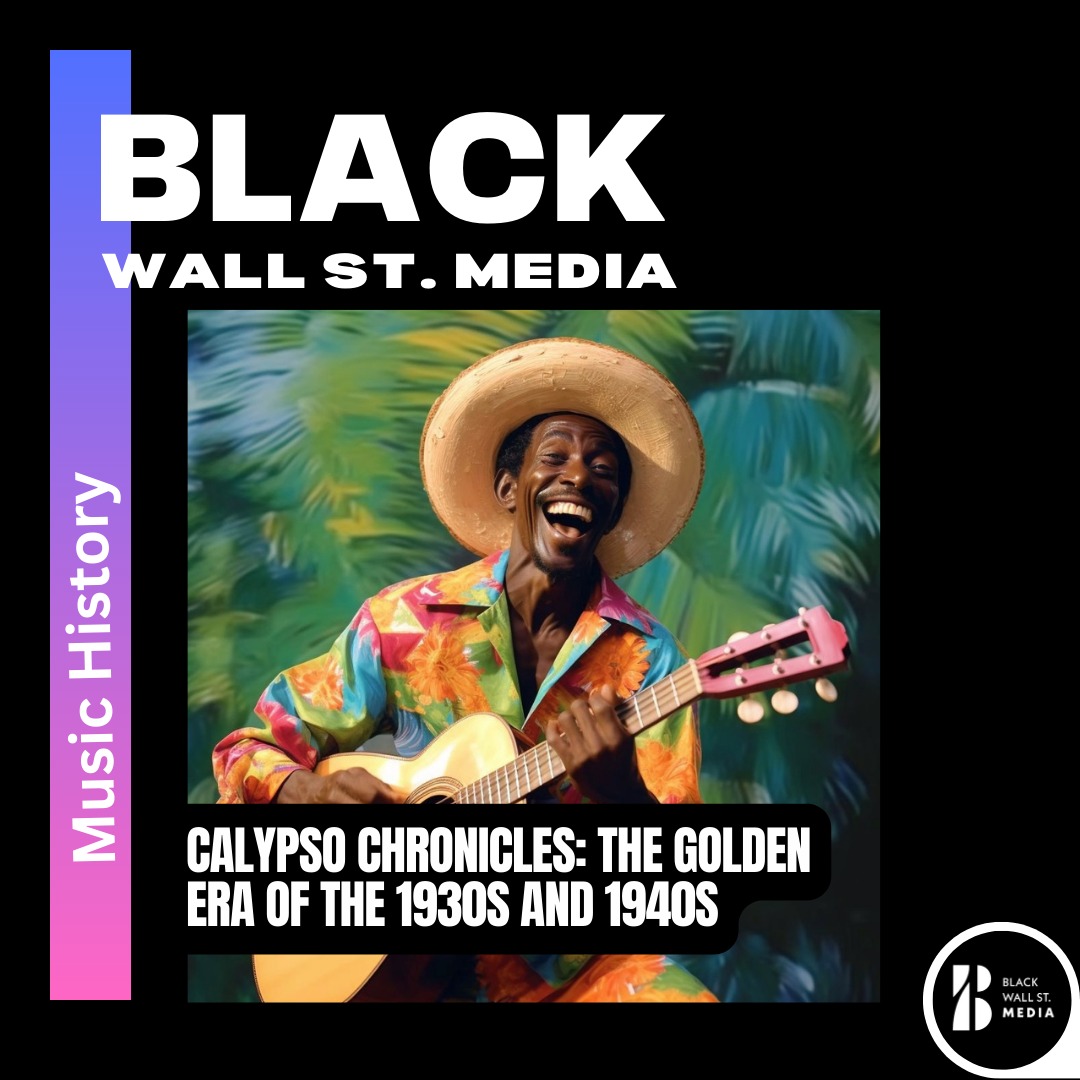MUSIC HISTORY
Calypso Chronicles: The Iconic Era of the 1930s and 1940s
“Step into the mesmerizing world of calypso! 🎶 Discover the enchanting tale of the 1930s and 1940s, hailed as the Golden Era of this vibrant musical genre. Join us as we unravel the rhythm, the legends, and the legacy of calypso in an unforgettable journey.”
Black Wall St. MediaContributor

Introduction: The 1930s and 1940s stand as the pinnacle of calypso music, often referred to as its Golden Era. During this remarkable period, the vibrant rhythms and infectious lyrics of calypso transcended its Caribbean origins, finding a global audience.
Notably, the influence of US-based recording studios like Columbia, Okeh, and Decca was instrumental in capturing the essence of calypso for distribution in both North America and the Caribbean.
One central figure in this historic musical movement was Eduardo Sa Gomes, a local music entrepreneur and the Trinidad agent for Brunswick Records. His relentless efforts played a pivotal role in propelling calypso onto the international stage.
Eduardo Sa Gomes: The Catalyst Eduardo Sa Gomes, a Portuguese immigrant who owned a music shop in Port of Spain, emerged as a linchpin in the calypso scene. His unwavering passion for the genre was characterized by his staunch support for local talent.
Sa Gomes recognized the immense potential of calypso and was dedicated to expanding its reach. Under his guidance, calypso artists found the financial backing and opportunities needed to catapult their careers to new heights.
A Defining Moment: The New York City Recordings In 1934, Sa Gomes made a groundbreaking decision that forever altered the trajectory of calypso history. He dispatched two prominent calypsonians, The Roaring Lion and Attila the Hun, to New York City for recording sessions. This bold move marked a turning point in solidifying the emerging trend of calypso stars traveling abroad to record their latest hits. These recordings opened doors to international recognition for calypso artists, allowing them to share their talents with the world.
The Emergence of Local Recording Studios As the demand for calypso music continued to surge, local recording facilities began to surface.
In 1938, the first studio was established in St. James, Trinidad. This development signified a significant shift in the calypso industry, as artists gained the capability to create and produce their music within their homeland.
The advent of these local studios enriched the calypso tradition, injecting a new level of authenticity into the genre.
Preserving Calypso’s Heritage The recordings of this era were crafted using analog methods, including phonographs and magnetic tape. These spirited tracks were then reproduced on 78rpm shellac records, a format that would later evolve into vinyl records.
These recordings are invaluable as they serve as a repository of Trinidad and Tobago’s historical eras. They encapsulate the essence of times marked by global conflicts, colonialism, evolving gender relations, political struggles, and economic shifts.
They are an invaluable audiovisual heritage, offering insights into the country’s past and its cultural evolution.
Safeguarding a Rich Legacy Eduardo Sa Gomes’s enduring legacy in promoting and preserving calypso remains an integral part of Trinidad and Tobago’s cultural heritage.
These musical treasures stand as a testament to the rich history and artistic expression of the Caribbean. As we celebrate Calypso History Month, it is essential to honor the substantial contributions of individuals like Sa Gomes and recognize the everlasting impact of calypso music on the global stage.
References:
-
The National Archives of Trinidad and Tobago Exhibition, “100 Years of Calypso Recording” (2012).
-
Maharaj, George D. “The Roots of Calypso: Another Passage into the World of Calypso.” George D. Maharaj, 2007.
-
Rohlehr, Gordon. “Calypso & Society in Pre-Independence Trinidad.” G. Rohlehr, 2004.
-
“West Indian Rhythm: Trinidad Calypsos on World and Local Events Featuring the Censored Recordings, 1938-1940.” Bear Family Records, 2006.
Black Wall St. MediaContributor







